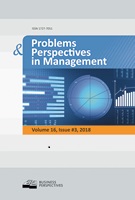Digital maturity variables and their impact on the enterprise architecture layers
Digital maturity variables and their impact on the enterprise architecture layers
Author(s): Karlheinz Schwer, Christian Hitz, Robin Wyss, Dominik Wirz, Clemente MinonneSubject(s): Economy, Business Economy / Management, ICT Information and Communications Technologies
Published by: ТОВ “Консалтингово-видавнича компанія “Ділові перспективи”
Keywords: digital management; digitalization; enterprise architecture; maturity models;
Summary/Abstract: This study examines the variables of digital maturity of companies. The framework for enterprise architectures Archimate 3.0 is used to compare the variables. The vari¬ables are assigned to the six layers of architecture: Strategy, Business Environment, Applications, Technology, Physical and Implementation and Migration. On the basis of a literature overview, 15 “digital maturity models” with a total of 147 variables are analyzed. The databases Scopus, EBSCO – Business Source Premier and ProQuest are used for this purpose.The results of the work will help researchers and managers to identify which digitiza¬tion variables affect the different layers of the company. This enables researchers or managers to use the right model for a specific purpose or to create a new model from a combination of existing models for the entire company or just one architectural layer.On the basis of a more precise assessment of the digital maturity of a company, better actions can be derived. This work is important for companies, as the digitization of enterprises and markets changed similarly to the invention of the steam engine did. Websites, sensors, mobile devices, apps, etc. are combined into new digital products and services. The competitors in the market have to adapt. If this is not done, they will increasingly disappear.Finally, the authors suggests a conclusion about the current situation regarding the measurement of digital maturity in companies and show in which areas further studies could be carried out.
Journal: Problems and Perspectives in Management
- Issue Year: 16/2018
- Issue No: 4
- Page Range: 141-154
- Page Count: 14
- Language: English

